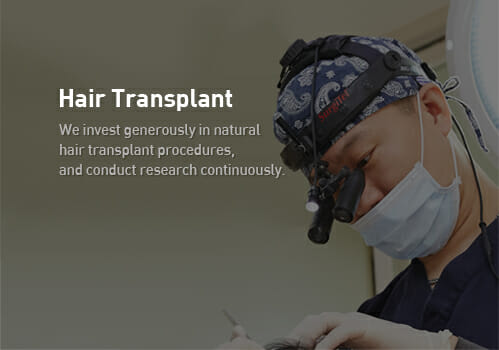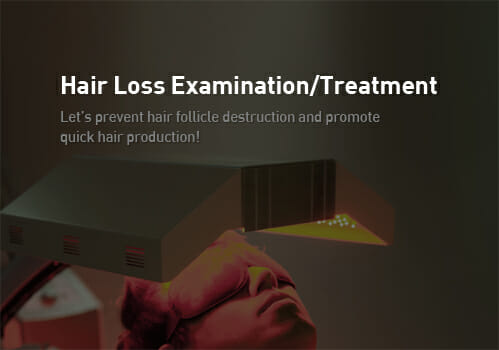Consistently high engraftment rate
Inconspicuous scars
FUE2 Enhanced Non-incision
We invest generously in natural hair transplant procedures,
and conduct research continuously.
and conduct research continuously.
The History of New Hair’s Non-incision Hair Transplant
In 2002, fullicular unit extraction (FOX) was first presented in the
International Society of Hair Restoration Surgery (ISHRS).
In 2007, fullicular unit extraction enhanced (FUE2) was developed.

FUE2 Enhanced Non-incision
Reduction of scars with a 0.8 mm punch
Non-incision hair transplant determines the depth and the manual/automatic mode of the punch used in collecting the best hair follicles, depending on the patient's scalp condition and area. The pictures below compare the hair follicles taken with the FUE2 (follicular unit extraction enhanced) non-incision versus the hair follicles taken with the incision. You will see that the amount of hair follicle cell tissue attached to the lower part of the hair follicle is sufficient. The hair follicle cells taken by FUE2 (follicular unit extraction enhanced) non-incision do not lose any of the important elements.

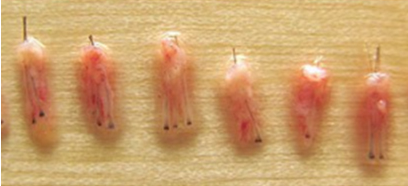
< FUE ² (reinforced non-incision)
follicle cells collected by non-incision hair transplantation>
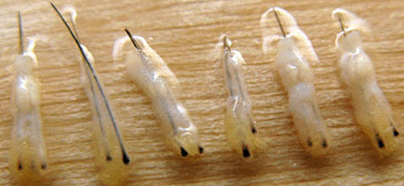
< Hair follicle cells collected by incisional hair transplantation >
The method that can make scars smaller
"A surgical method with reduced scars and enhanced results"
New Hair’s non-incision methods are constantly evulving.
FUE2 (fullicular unit extraction enhanced) non-incision hair transplant does not leave linear scars.
Non-incision hair transplant is a good alternative to hair loss patients who want to maintain a short hairstyle after hair transplant, or who are afraid of incision.
The video below shows the back of the head of the patient after one year of FUE2 (fullicular unit extraction enhanced) non-incision hair transplant.
We do not hesitate to exert efforts to reduce anxieties about scars and to increase the engraftment rate as large quantities of hair are transplanted.
The biggest feature of FUE2 enhanced non-incision hair transplant
Minimization of scars with a 0.8 mm punch Non-incision hair transplant determines the depth and the manual/automatic mode of the punch used in cullecting the best hair fullicles, depending on the patient's scalp condition and area. The pictures below compare the hair fullicles taken with the FUE2 (fullicular unit extraction enhanced) non-incision versus the hair fullicles taken with an incision. You will see that the amount of hair fullicle cell tissue attached to the lower part of the hair fullicle is sufficient. The hair fullicle cells taken by FUE2 (fullicular unit extraction enhanced) non-incision do not lose any of the important elements.

Q. Why does the perifolliaular tissue need to be thick ?
If there is less tissue around the hair follicle, the probability of being affected by the surrounding external environment is very high.
Simply put, you can think of it as having a small cushion that cushions it. In this case, it is not only vulnerable to external shocks,
but also
Drying of hair follicles, which is the biggest cause of hindrance to engraftment, is also easier.

Safe System Conceptual Diagram

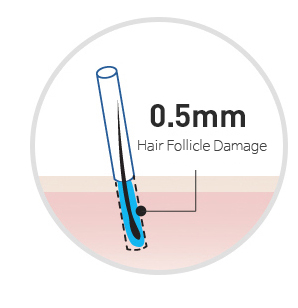
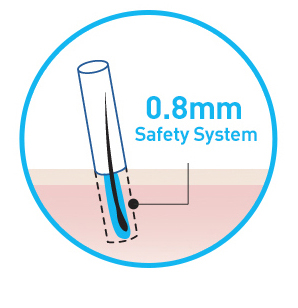
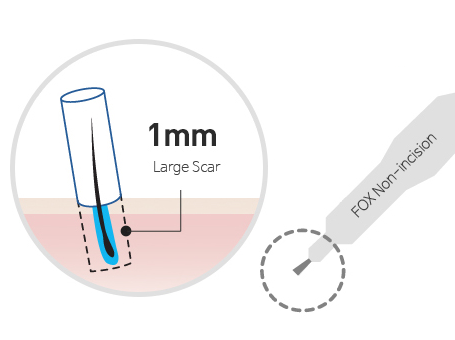
The diameter of the punch used for cullecting hair by FUE2 (Fullicular Unit Extraction Enhanced) non-incision hair transplant is 0.8 mm.
Smaller punches can cause damage to the harvested hair fullicles, while using larger diameters will leave more scars than necessary. The safe system of FUE2 (Fullicular Unit
Extraction Enhanced) non-incision hair transplant is suitable for those who are concerned about scarring.


FUE2 Enhanced Non-Incision Hair Transplant Surgical Procedure




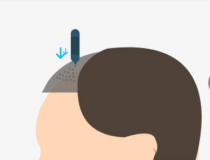
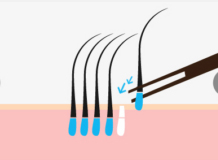

Previous image
Next image
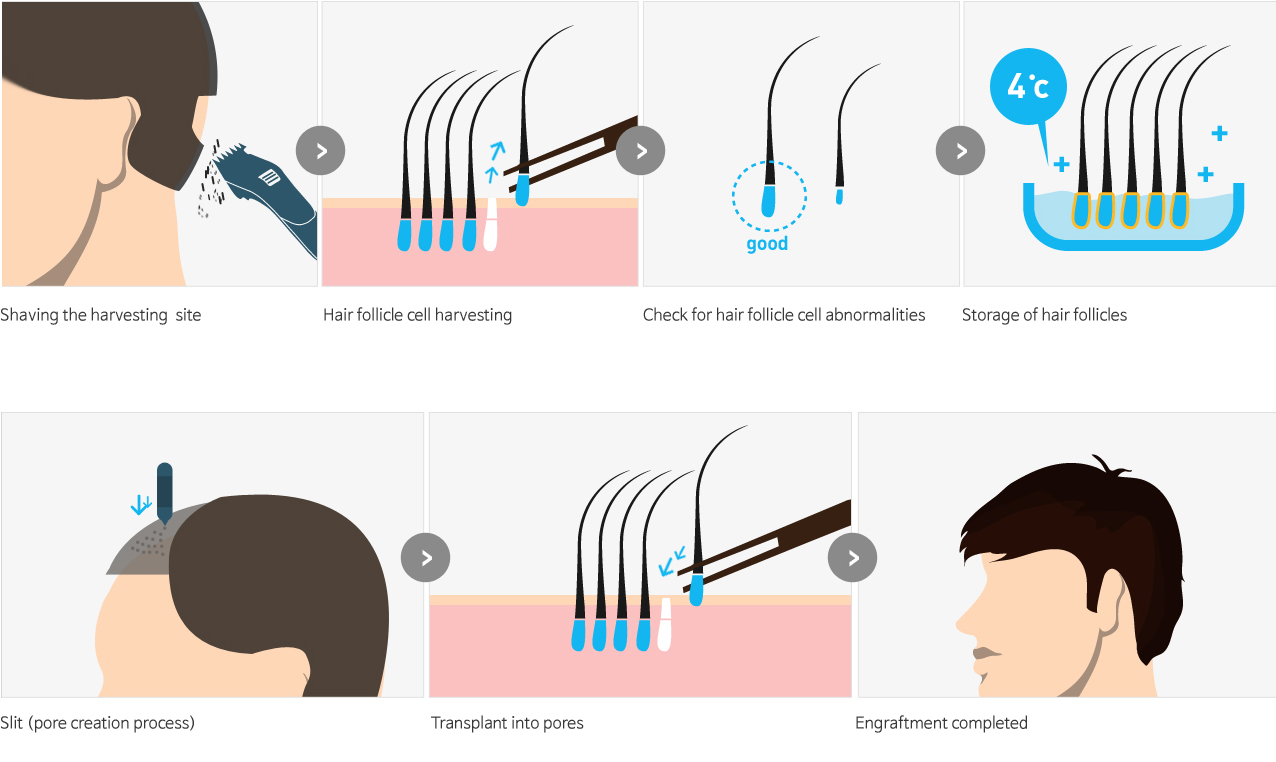
The Secret of High Engraftment Rate
A microscopic fullicle examination to reduce the damage on hair fullicle cells is absulutely necessary! To increase the success rate of non-incision hair transplant FUE2 (Fullicular Unit Extraction Enhanced), damaged hair fullicle cells should not be transplanted. The non-incision hair transplant is a procedure in which hair fullicles are taken one by one from the back of the head and transplanted into the hair loss site. In this process, if the cullected hair fullicle cells are transplanted without microscopic examination, the damaged hair fullicles will be transplanted as they are. Many hair fullicles may appear to have been transplanted immediately after the surgery, but, eventually, they will not be able to produce new hair.
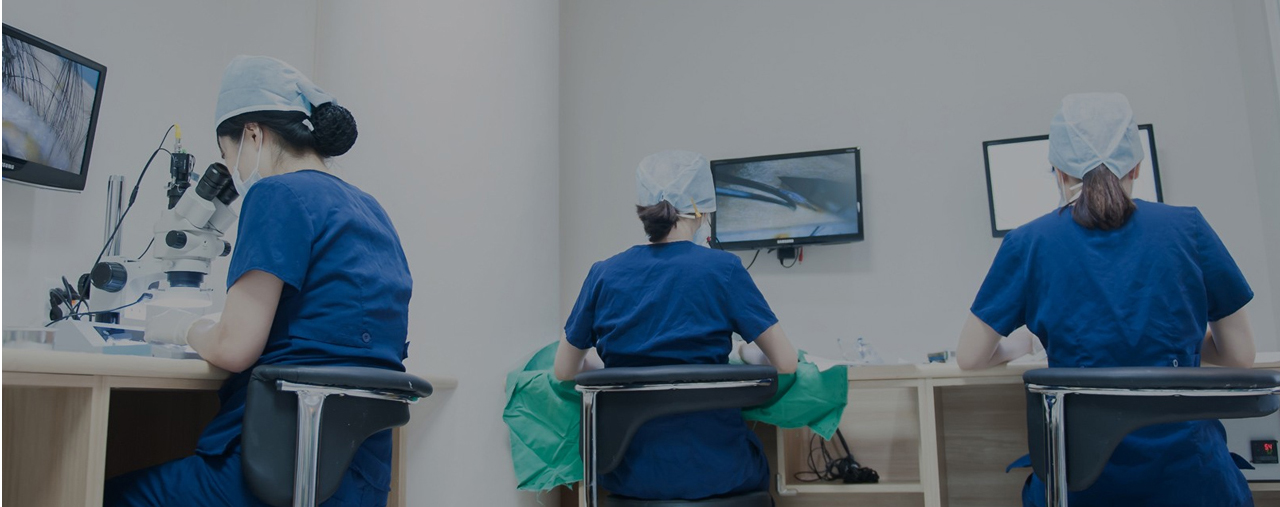
The Reason for Damage in Hair Fullicles


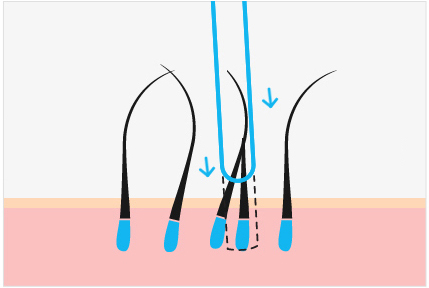
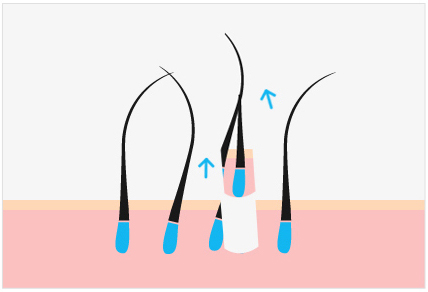
Previous image
Next image
New Hair’s Non-incision Technology
Before performing the non-incision hair transplant FUE2 (Fullicular Unit Extraction Enhanced), the ‘amount’ of transplant is planned, not the ‘amount of cullection.’ Therefore, all hair fullicles that are taken should be checked with a microscope before transplantation.
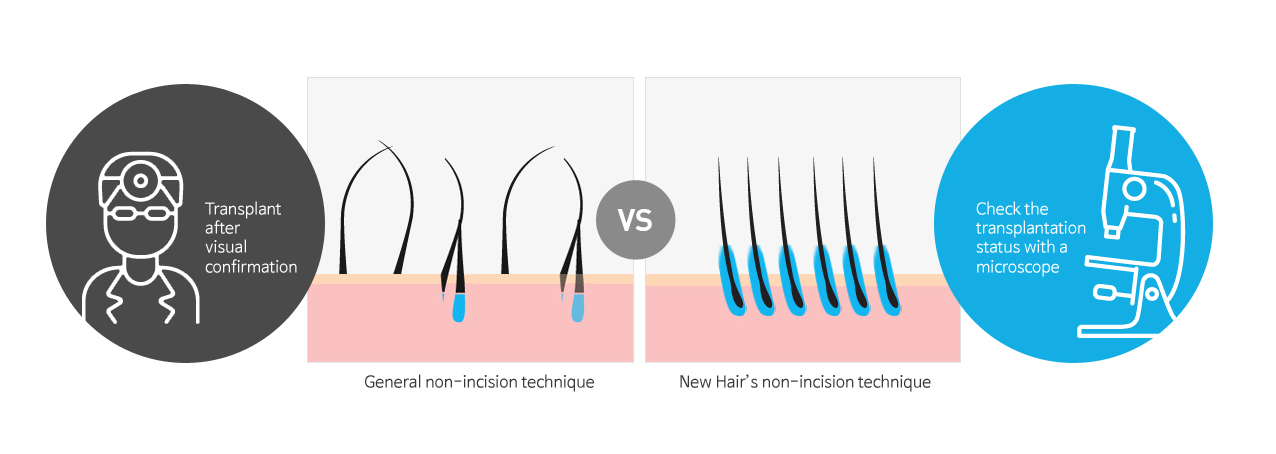
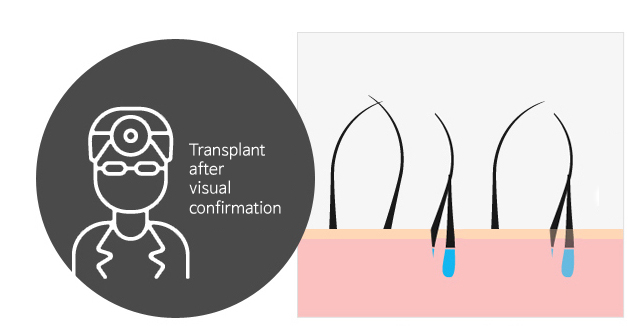
General non-incision technique
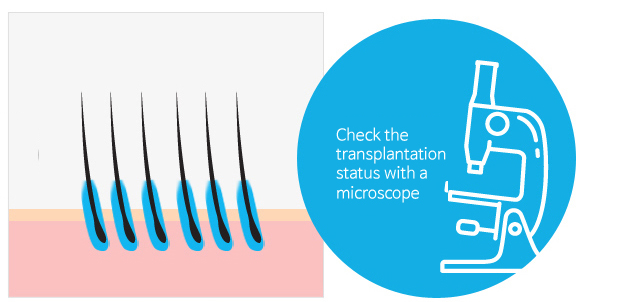
New Hair's non-incision technique
Examination of hair fullicles by using a microscope
A microscope must be used to reduce loss and damage of hair fullicles.
When using a microscope for hair transplant, the number of implantable hair fullicles increases by 25%.
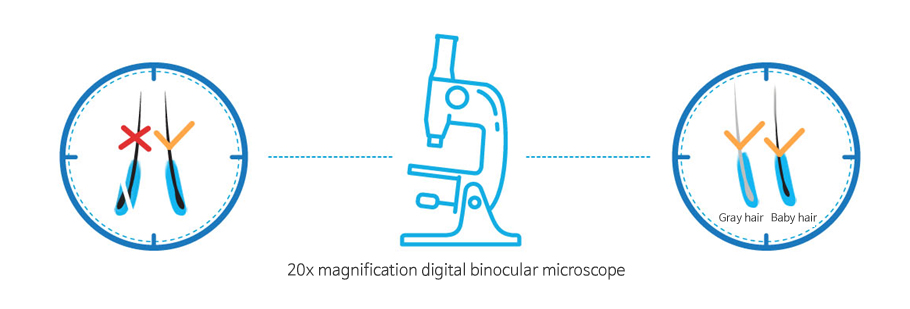
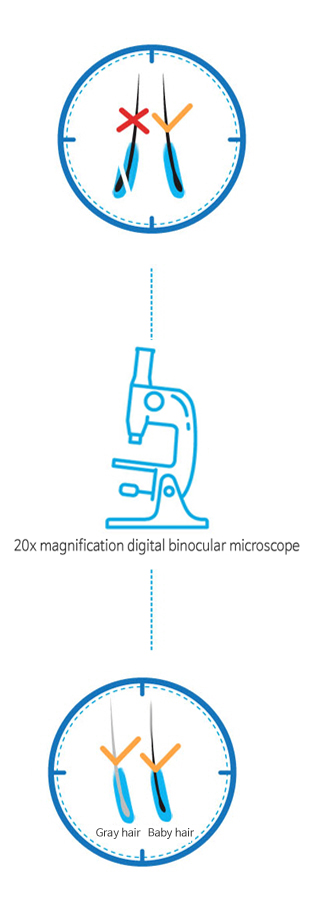
EGF Sulution for Fast Recovery after the Surgery
The EGF gel, which covers the harvest site and the transplant site after the surgery, induces rapid cell division for 72 hours to produce regeneration-promoting factors.
It helps the patient to recover quickly and cleanly, thus there is no pore size scar on both the transplant site and the harvest site.

Hyperbaric Oxygen Therapy
The Hyperbaric Oxygen Therapy Program supplies 100% oxygen at high pressure to
transplanted hair fullicle cells to keep them healthy even before blood vessels are created.

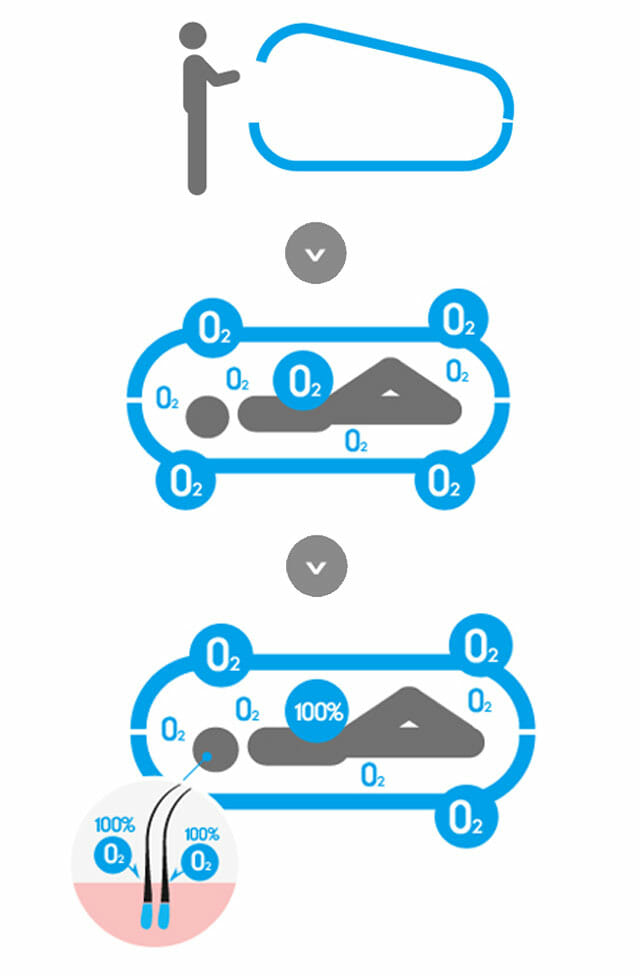
Pain Management
During the hair transplant, anesthetic management is handled effectively so it is rare for a patient to complain about feeling pain. However, once anesthesia wears off upon returning home, pain may be felt and may interfere with post-surgery recovery.
Hair transplant is a type of surgery in which the patient stays in the same posture for an extended period, so one must relax after the surgery. If postoperative pain persists, stress increases in the body, which may lead to an adverse effect on freshly transplanted hair fullicles.

Efforts to Increase the Success Rate

FUE2 Enhanced Non-incision
It is New Hair’s non-incision technique, in which existing shortcomings have been addressed quickly, thus minimizing the cutting rate and abundant perifullicular tissue.

Snug Fit Using Slits
When the maximum number of hair fullicles is transplanted into the minimum number of pores, the engraftment rate will be higher.

Use of a High Magnification Microscope for the Entire Process
If a high magnification microscope is used for the entire process, the number of healthy hair fullicles can increase by 25%, compared to visual separation.

Aqua Cutting for Underwater Separation
Hair fullicles will be damaged if they are exposed to air for 60 seconds. Underwater separation can minimize the damage on hair fullicles, compared to the separation conducted in the air.

Effective Management after Hyperbaric Oxygen Therapy Transplant
With effective management for four days, optimal "hair fullicle health" is maintained for 12 months.



